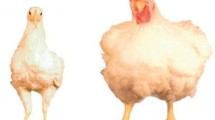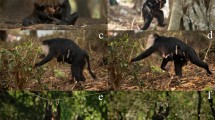Abstract
We investigated the effects of cohort, sex, litter size and time of birth on birth weights and postnatal growth rates of roe deer fawns in a highly reproductive Norwegian population. By repeatedly recapturing radio-collared individuals, a total of 950 weights were obtained from 231 fawns of known age. In accordance with earlier studies, there was a period of linear growth during the first month following birth. Mean postnatal growth rates of 155 g/day are the highest yet recorded for roe deer; however, the mean birth weights of fawns were lower than those reported from populations in continental Europe. During the period of linear growth, we found no sex differences. However, growth rates were affected both by time of birth and litter size; fawns born early had lower growth rates than fawns born during or after the peak calving period, and fawns in triplet – groups had lower growth rates than either fawns in twin – groups or single fawns. Despite a fourfold increase in population density during the study, this factor was not able to explain variation in postnatal growth rates, although cohort effects on birth weight were evident.
Similar content being viewed by others
Author information
Authors and Affiliations
Additional information
Received: 13 May 1996 / Accepted: 26 June 1996
Rights and permissions
About this article
Cite this article
Andersen, R., Linnell, J. Variation in maternal investment in a small cervid; the effects of cohort, sex, litter size and time of birth in roe deer (Capreolus capreolus) fawns. Oecologia 109, 74–79 (1996). https://doi.org/10.1007/s004420050060
Issue Date:
DOI: https://doi.org/10.1007/s004420050060




